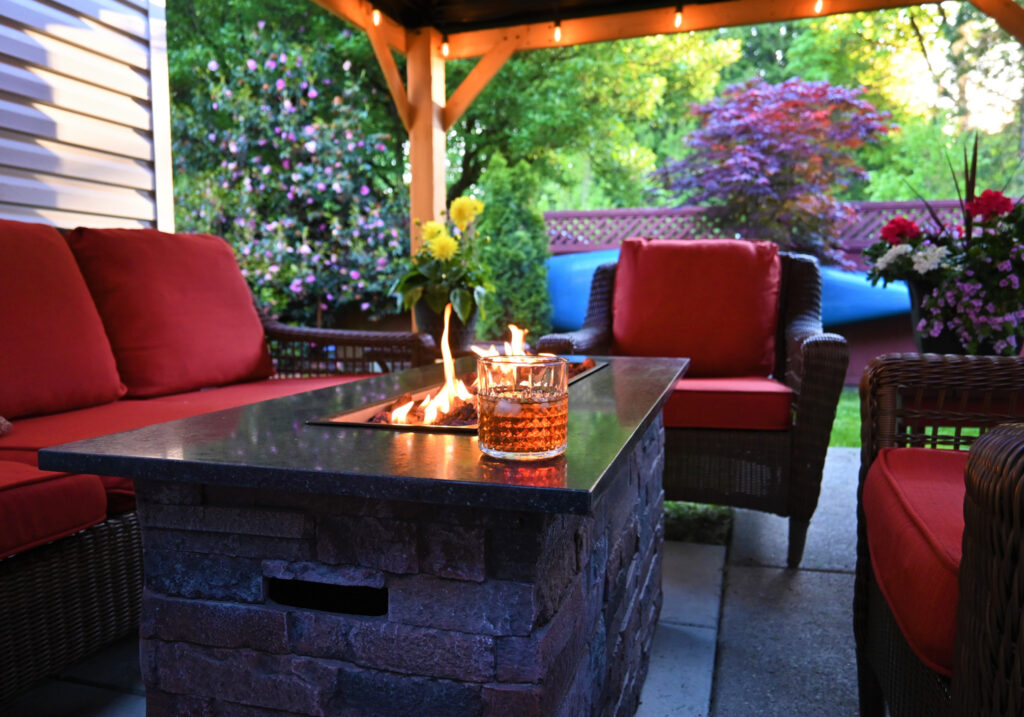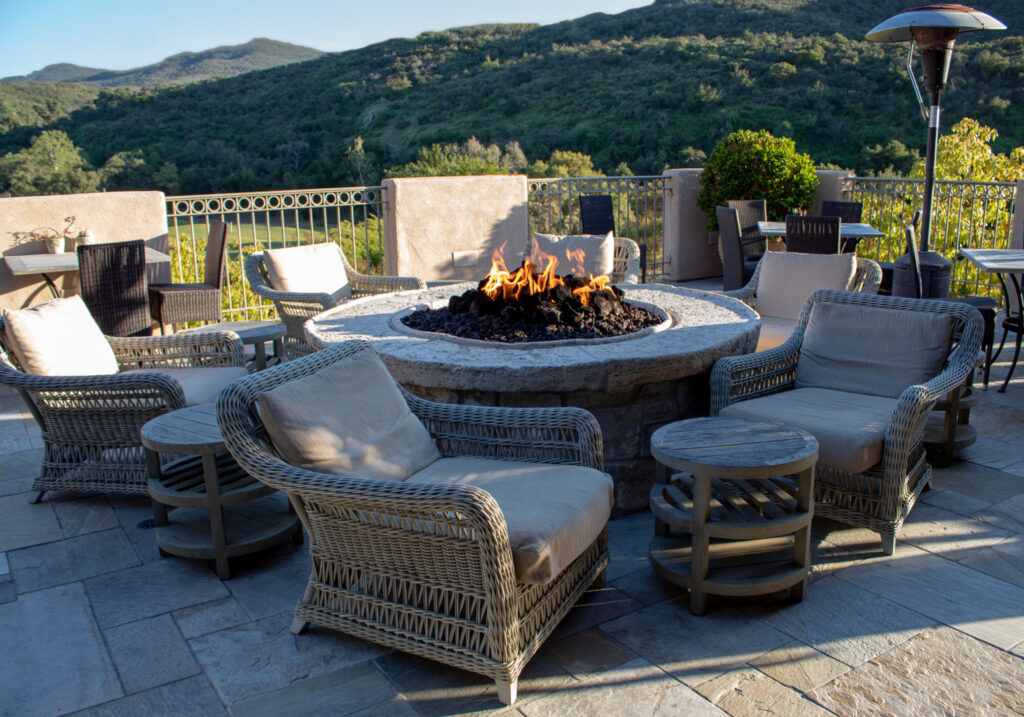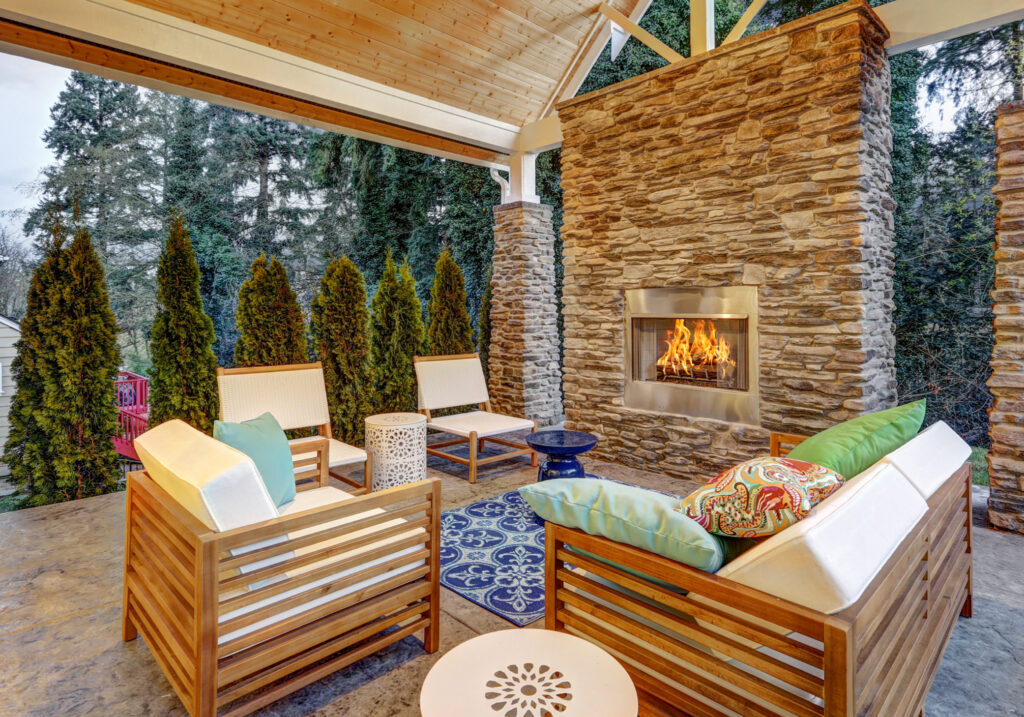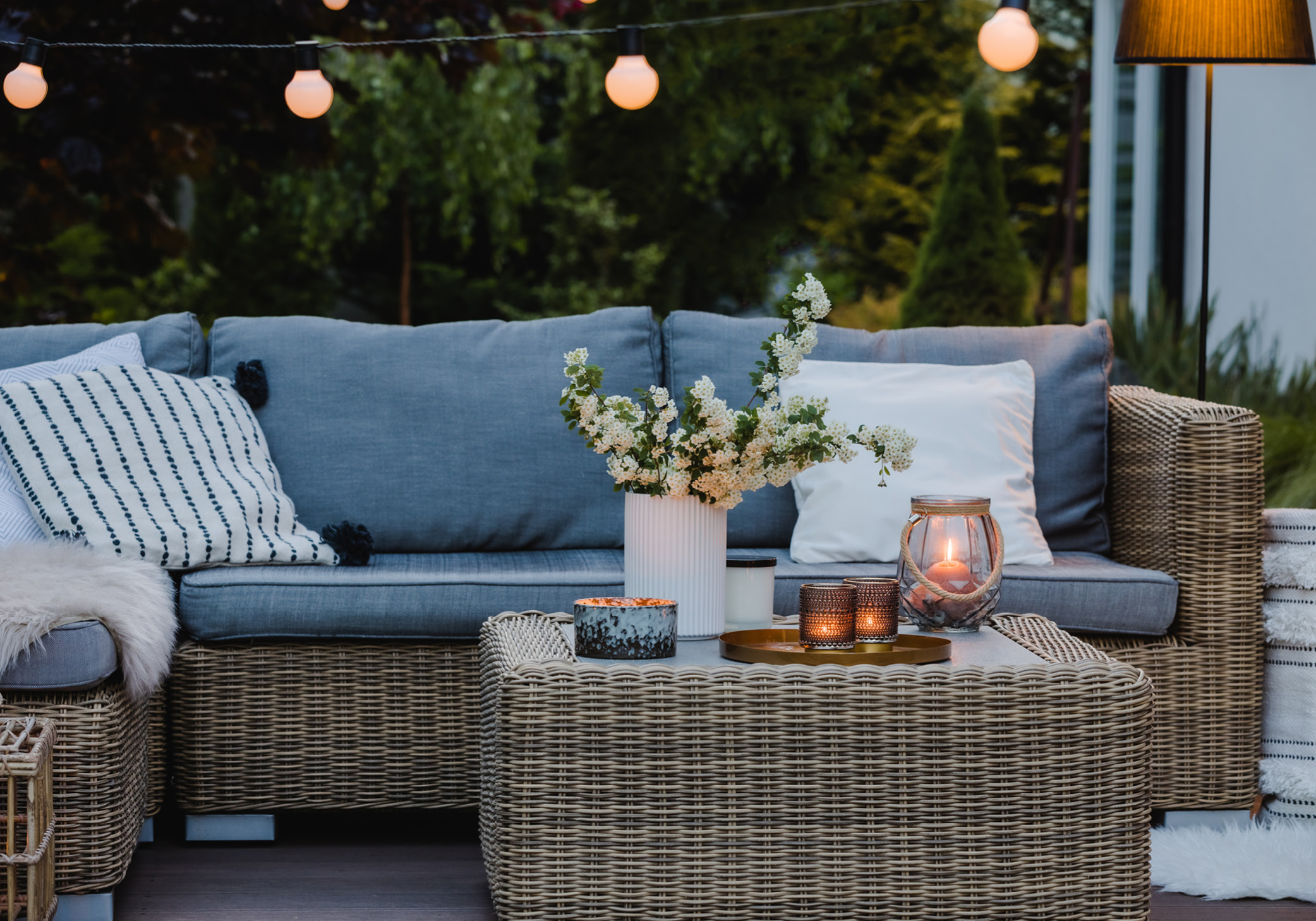More and more, people enjoy their outdoor living spaces even after the snow begins to fall. Modern conveniences and some classic options have allowed homeowners and renters to transition from fall to winter without missing a step. And they can do this while still focusing on the comfort of their family and friends. Read on for some of our favorite tips for making much-loved outdoor living spaces winter-ready.
 Shine a Light on Your Outdoor Living Spaces
Shine a Light on Your Outdoor Living Spaces
As fall transitions into winter, there is no getting around the fact that it gets darker much earlier. When getting your outdoor living spaces winter-ready, the first thing you need to do is to add appropriate lighting. If your yard or patio is already reasonably well illuminated, you can focus on making small changes – adding solar table-top lanterns that can be moved where needed, installing path lighting, and assessing how weatherproof your existing lamps are. Southern Living advises those prepping their outdoor spaces to consider the elements before making purchases: “Rain dripping on an ordinary light bulb will cause it to crack. Bulbs designed for exposed outdoor use, such as PAR lamps, feature heavy-duty glass that withstands breakage.”
Are you interested in having your space take on a romantic tone? Picture draping ball bulb lights from tree branches, across pergolas, or from your home to the back garage or shed. The editors at Martha Stewart Living are fans of the affordable LTD Commodities Bulb Solar String Lights: “Available in both white and multi-colored, these ball bulb lights are an easy, festive way to light up your yard.” And while they are a delight for the holidays, they aren’t so season-specific that you can’t keep these magical lights up all year long.
Winterize Your Outdoor Furniture
Do you know if your outdoor furniture can withstand the elements? If you were like many people who bought new patio or yard furniture in the last year, you might want to check to see if the furniture can handle rain and/or snow. If you are thinking about buying new furniture to make your outdoor living space into a wintertime oasis, make sure it is made from sturdy, weather-resistant materials like teak, coated iron or steel, or recycled all-weather plastic/resin.
Real Simple points out that “you’ll get the most life from your cushions if you bring them inside as much as possible.” If you can’t do that, consider investing in cushion covers so that you don’t have to worry about drying cushions out every time you want to use them during the winter (or a rainy spring). If you are in the market for new cushions, choose ones that are durable and made from “solution-dyed acrylic, which is designed for outdoor use and resists UV rays, moisture, mildew, and staining,” or “spun polyester with a UV-protective coating [which] dries quickly and is less expensive, but isn’t as resistant to fading.”
 Turn up the Heat
Turn up the Heat
Have you been eyeing firepits with longing for the last couple of months? Now is the time to install one in your backyard or on the patio. While years ago, you may have been limited to one particular style of wood-burning fire pit, today, you have dozens of options for wood-burning and propane models. If you plan on doing a lot of entertaining in your outdoor living space (and you have the room), choose one that offers a table-like surround that can support drinks and snacks. If you are searching for something smaller, with a more rustic feel, consider something like “Martha Stewart’s Bedford Wood-Burning Round Fire Pit [which provides] intimate, cozy, wood-burning warmth for an evening in the backyard.”
Standing liquid propane heaters are also terrific for directing heat to your guests. You have undoubtedly seen the larger industrial models at restaurants, but home-use standing heaters are easily moved and can be situated wherever you need to turn up the heat. They are ideal for outdoor dinner parties and other sit-down celebrations. Couple the heaters with a hot cider toddy or cocoa and a fleece blanket, and your guests may never want to leave.
Are you thinking about making a more permanent addition to your outdoor living space? It may be time to invest in building an outdoor fireplace. Midwest Living raves about the idea and celebrates today’s options. Among their favorites: a “three-sided fireplace [with] views [that] are hot from almost anywhere in the yard,” an outdoor fireplace with “flowing lines of brick and stone [turning] the back of a house into a thing of beauty and warmth,” and a “Spanish-style two-sided fireplace, [which] heats two seating areas.”
 Take Cover
Take Cover
It’s not too late to add cover to your outdoor living spaces. Heather Napier, Marketing Director for Backyard Discovery, tells Martha Stewart Living, “‘[investing] in a pergola or covered gazebo is also a great way to offer protection from the elements and create an inviting outdoor space.’” Pergolas and gazebos can often be constructed over a weekend and are an affordable way to enhance your outdoor experience, even during the winter months.
If you already have an outdoor living room that boasts a roof or fabric cover, try incorporating curtains as the season changes. Curtains can help guard against the icy wind as the temperature drops. They also help you retain the heat that you are generating from your outdoor fireplace, fire pit, or heaters. Just be sure to weight them so that they do not blow near the flame, should the wind pick up while the fire is lit.
Prepare Your Garden
When transitioning outdoor living spaces from fall to winter, you want to prepare your garden. Preparations now will make your space feel festive and alive, even during the dead of winter, and they can make your transition into spring that much easier. Southern Living recommends bringing in your tender plants, turning off sprinkler systems, and “[mulching] over marginally hardy plants.” Cleaning up the vegetable garden will get it ready for spring, and planting winter-friendly specimens like Winter Jasmine, Camellias, and holly bushes will make your space look like it is thriving.
Finally, Southern Living cautions gardeners to remove all their clay pots from their outdoor gardens. Why? The Magazine warns: “Clay pots absorb and release water — they “breathe” — which is why plants grow so well in them. But when wet clay pots freeze, they develop small cracks that eventually become big cracks and the pots shatter.” Store them inside to avoid the worst of winter so they will be ready when spring arrives and a new cycle of planting (and entertaining) begins.


